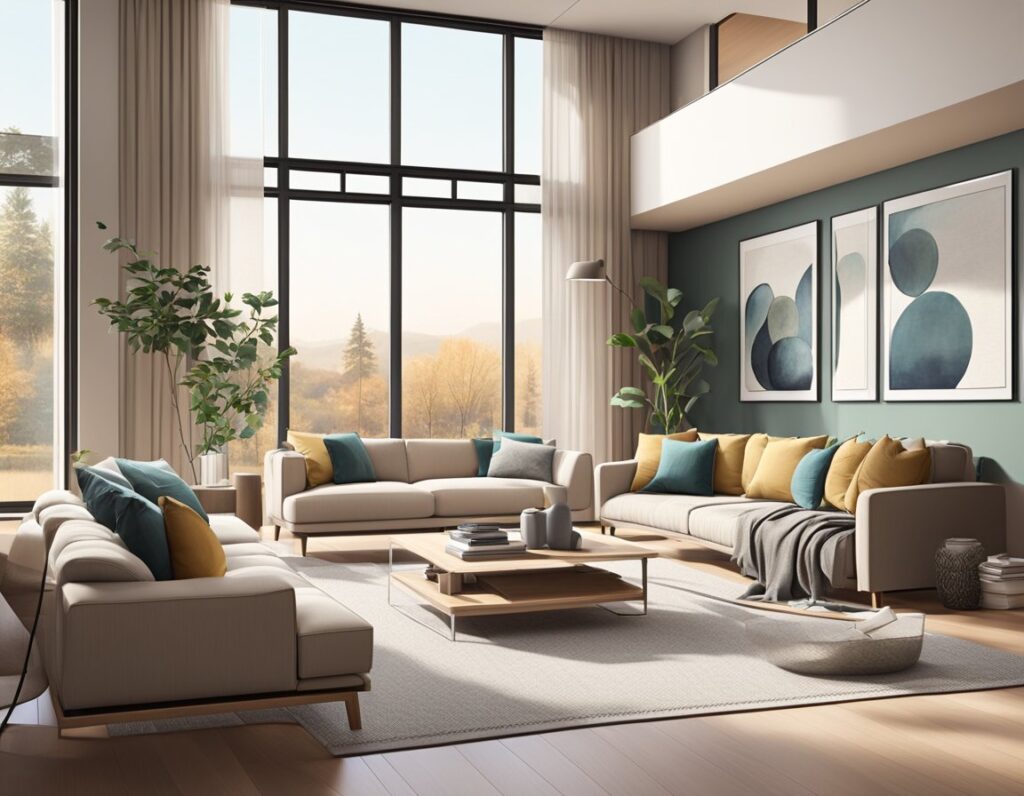Interior design is a practice that embraces creativity, functionality, and style to transform any space into your personalised haven.
From choosing colour schemes to selecting furniture, every detail plays a pivotal role in crafting an environment that reflects your taste and lifestyle.
Utilising visual aids such as mood boards and floor plans not only stimulates the imagination but also provides a clear visual path to align your design aspirations with practical outcomes.

As you venture into the realm of interior design, it’s crucial to understand the fundamental principles that guide the process.
Balancing aesthetics with comfort, understanding the impact of colour psychology, and harmonising textures and patterns are just the beginning.
Visual aids prove to be invaluable tools in this journey; they allow you to plan your dream space with precision, offering a glimpse into the future of your living space before any physical changes are made.
Key Takeaways
- Visual aids greatly enhance the interior design process.
- A balanced, well-thought-out space considers functionality and style.
- Effective planning with visual tools can bring your design vision to life.
Fundamentals of Interior Design
Embarking on an interior design project requires a grasp of key concepts to ensure your space is both aesthetically pleasing and functional.
These foundations are necessary for planning any room.
Understanding Space and Function
When considering your room’s layout, you need to account for both its physical size and how it will be used.
Measure the area carefully and think about the activities that will take place there. This will dictate the type and arrangement of furniture.
Utilise visual aids like floor plans to map the space efficiently, ensuring there’s ample room for movement and that each piece serves a purpose.
Principles of Visual Balance
A harmonious interior is achieved when visual balance is established.
Balance can be symmetrical, asymmetrical, or radial. For example, placing two armchairs opposite each other can create symmetry, while an off-centre art piece might offer an interesting asymmetrical look.
Assess the visual weight and distribution of objects in your space; they should draw the eye around the room comfortably.
Colour Schemes and Lighting
Selecting a colour scheme affects both the mood and perception of space.
Warmer tones often create a cosy atmosphere, while cool shades can make a room feel more spacious. Complementary, analogous, and monochromatic are types of colour schemes one might consider.
Additionally, lighting has a profound impact—it can alter colours and even the perceived size of an area.
Incorporate a mix of ambient, task, and accent lighting to enhance functionality and set the desired tone.
Visual Aids in Interior Design
In interior design, visual aids are essential for envisioning and planning the layout and aesthetic of a space.
They allow you to see potential changes before they occur, and effectively plan your design.
Blueprints and Floor Plans
Blueprints and floor plans are the foundational visual tools in interior design.
Blueprints detail the technical aspects of a space, including measurements, electrical outputs, and plumbing locations, which are crucial for accurate furniture placement and functionality.
Floor plans provide a bird’s eye view of the room, helping you to arrange furniture and features efficiently.
These aids enable a clear understanding of the room’s scale and the interaction between various elements.
3D Modelling and Virtual Reality
Advancements in technology have introduced 3D modelling and virtual reality (VR) into the realm of interior design.
With these tools, you can immerse yourself in a life-like digital representation of your space.
3D models give a realistic sense of volume and depth, making them ideal for experimenting with furniture layout and colour schemes.
VR takes this a step further by allowing you to ‘walk’ through the digital space, providing an invaluable perspective on the flow and feel of a room.
Mood Boards and Material Samples
Mood boards are a creative collage of images, materials, textures, and colours that convey the overall ‘mood’ of the space you are designing.
They are an excellent way to visualise colour schemes and thematic elements.
Pairing mood boards with material samples such as swatches of fabric, paint chips, and flooring samples, offers a tangible sense of the textures and combinations that will fill the room.
These tactile elements help to ensure that all design components harmonise in the actual space.